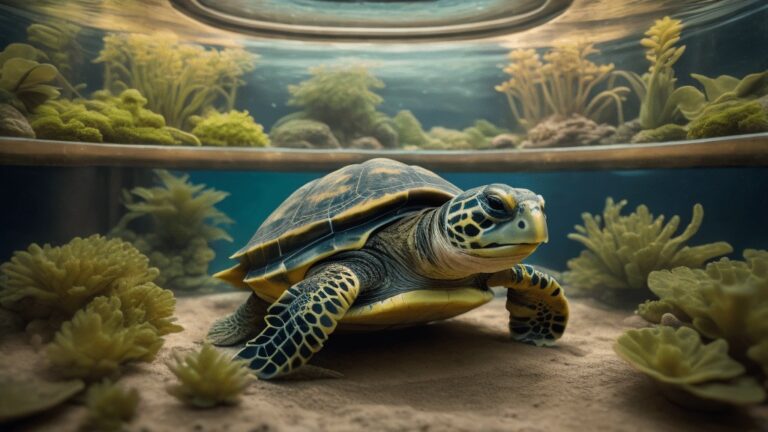Creating the perfect habitat for your pet turtle is essential to ensure its health, happiness, and longevity.
The right environment will help your turtle thrive and reduce the risk of stress and illness.
In this comprehensive guide, we will discuss the key components of a turtle habitat, including the tank or enclosure, lighting, heating, water quality, filtration, and decoration.
Additionally, we will cover topics such as turtle diets, health, and safety precautions.
Setting Up the Ideal Pet Turtle Habitat
Choosing the Right Tank or Enclosure
Size: The size of the tank or enclosure will depend on the size and species of your turtle.
As a general rule, you should provide at least 10 gallons of tank space per inch of your turtle’s shell length.
This allows for adequate swimming and basking areas.
Keep in mind that turtles grow throughout their lives, so it’s essential to plan for their adult size.
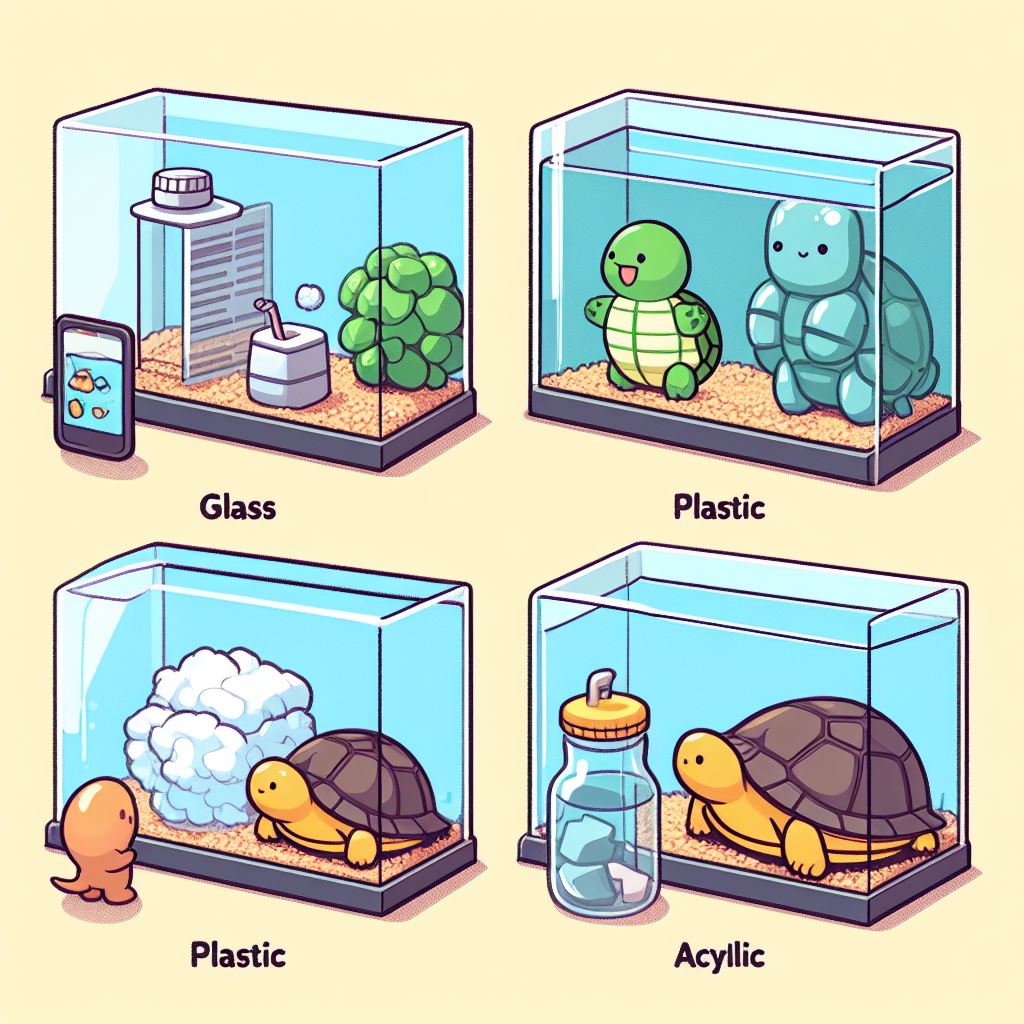
Material: Glass aquariums are the most popular choice for turtle enclosures, as they are easy to clean and maintain.
Plastic or acrylic tanks can also be used, but they may scratch more easily.
Shape: Turtles require both land and water areas in their habitat. A rectangular tank is the best shape for providing ample swimming space and a dry basking area.
Safety: Ensure the tank has a secure lid or cover to prevent your turtle from escaping. This will also help to maintain humidity levels and prevent household pets from accessing the enclosure.
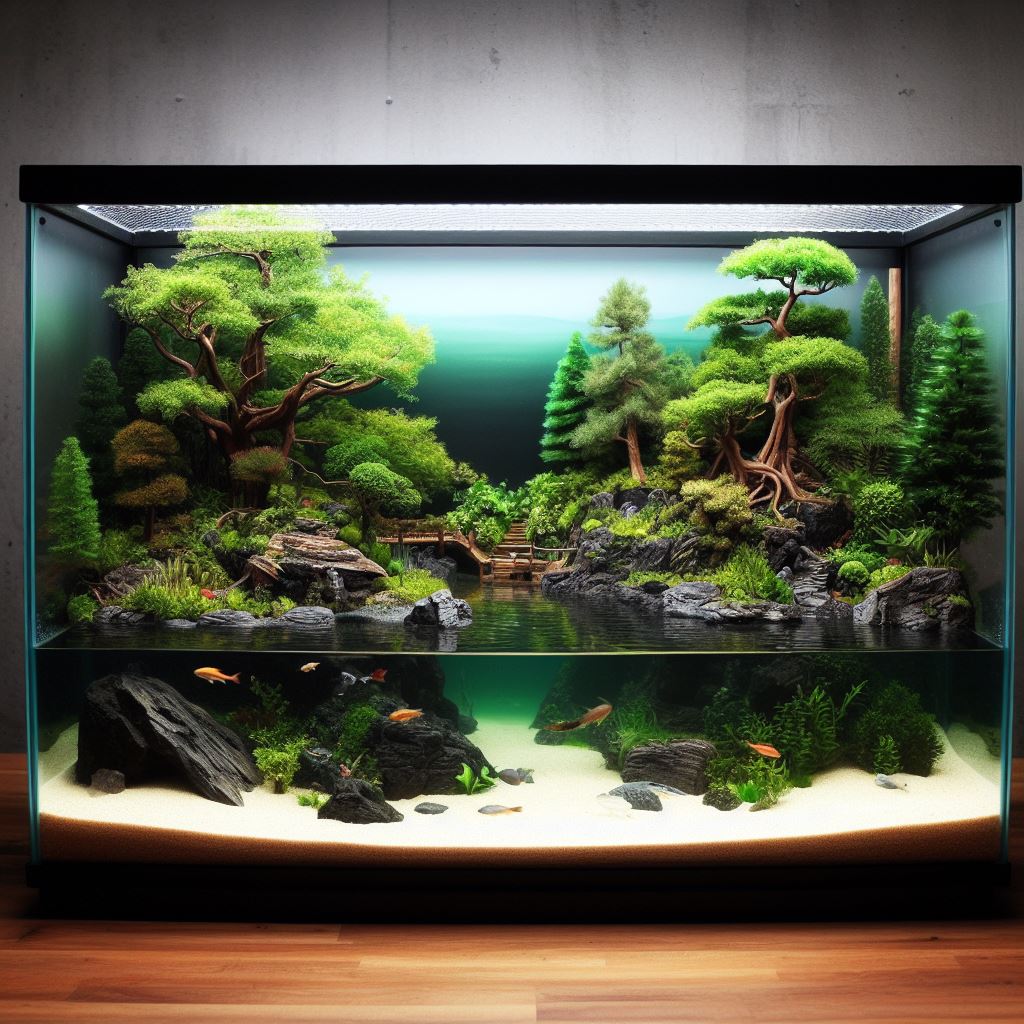
Lighting and Heating

UVB Lighting: Turtles require exposure to ultraviolet B (UVB) light to synthesize vitamin D3, which is essential for calcium absorption and shell health.
A UVB-emitting reptile bulb should be placed above the basking area and replaced every 6-12 months.
There are various types of UVB bulbs available, including compact fluorescents, linear fluorescents, and mercury vapor bulbs. Be sure to research the best option for your specific turtle species.
Basking Light: A heat lamp should be placed above the basking area to provide a warm spot for your turtle to regulate its body temperature.
The temperature in the basking area should be around 90-95°F (32-35°C) for most species.
An infrared heat lamp can be used for nighttime heating without disrupting the turtle’s day-night cycle.
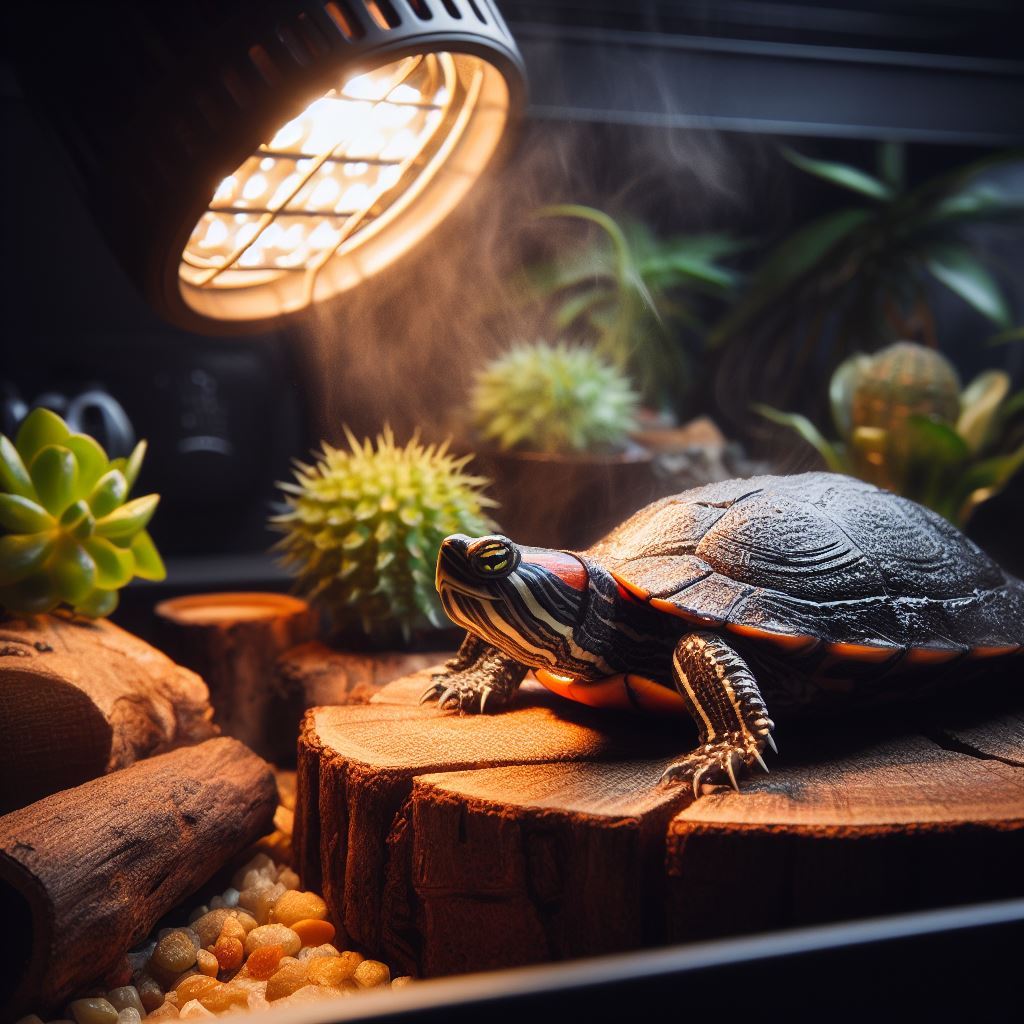
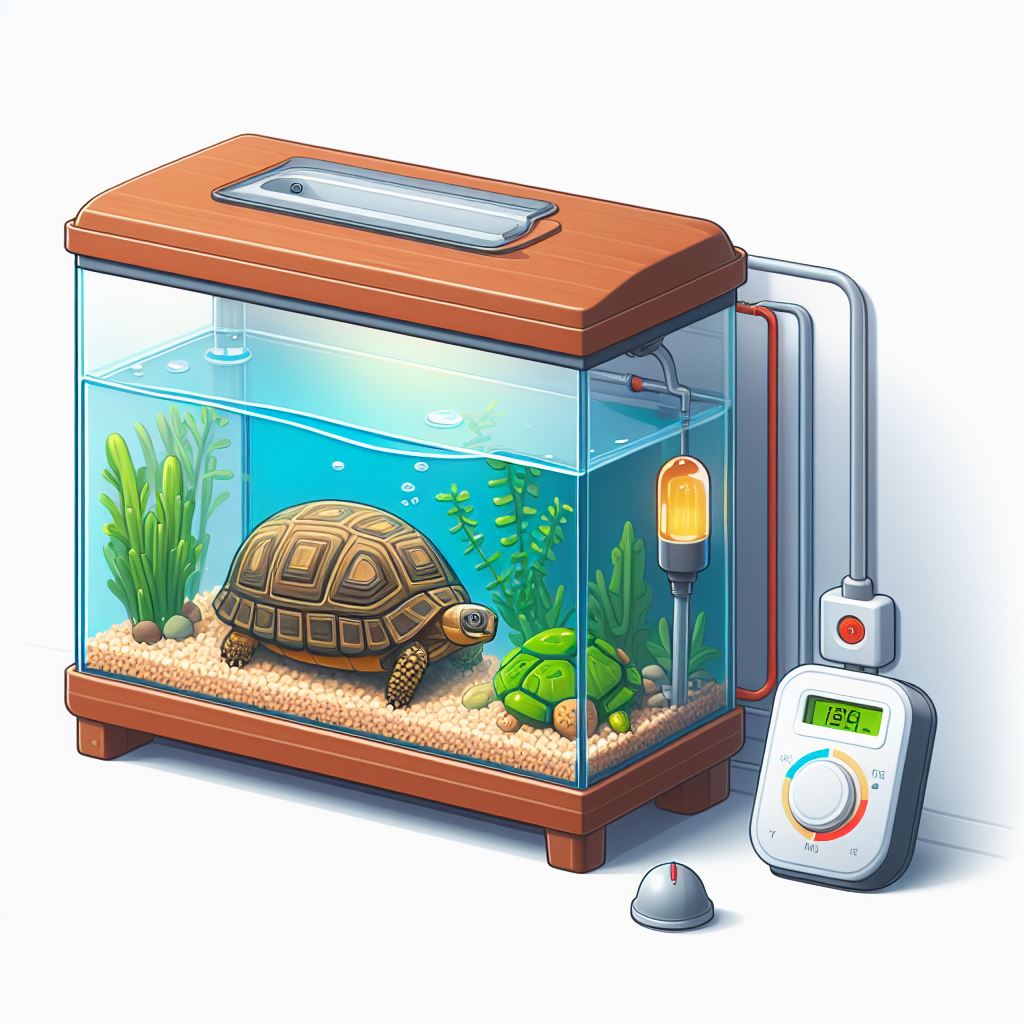
Water Heater: Turtles are ectothermic, meaning they rely on their environment to regulate their body temperature.
A water heater is necessary to maintain a consistent water temperature, typically between 75-80°F (24-27°C).
- Thermostats and Timers: To maintain consistent temperatures and lighting schedules, consider using thermostats and timers. These devices can help regulate the heat and light sources, ensuring a stable environment for your turtle.
Water Quality and Filtration
Filtration: A good filtration system is essential to maintain clean and healthy water for your turtle.
A canister filter or a submersible filter is recommended, as they provide both mechanical and biological filtration.
Canister filters are generally more efficient and quieter, while submersible filters are more affordable and easier to install.
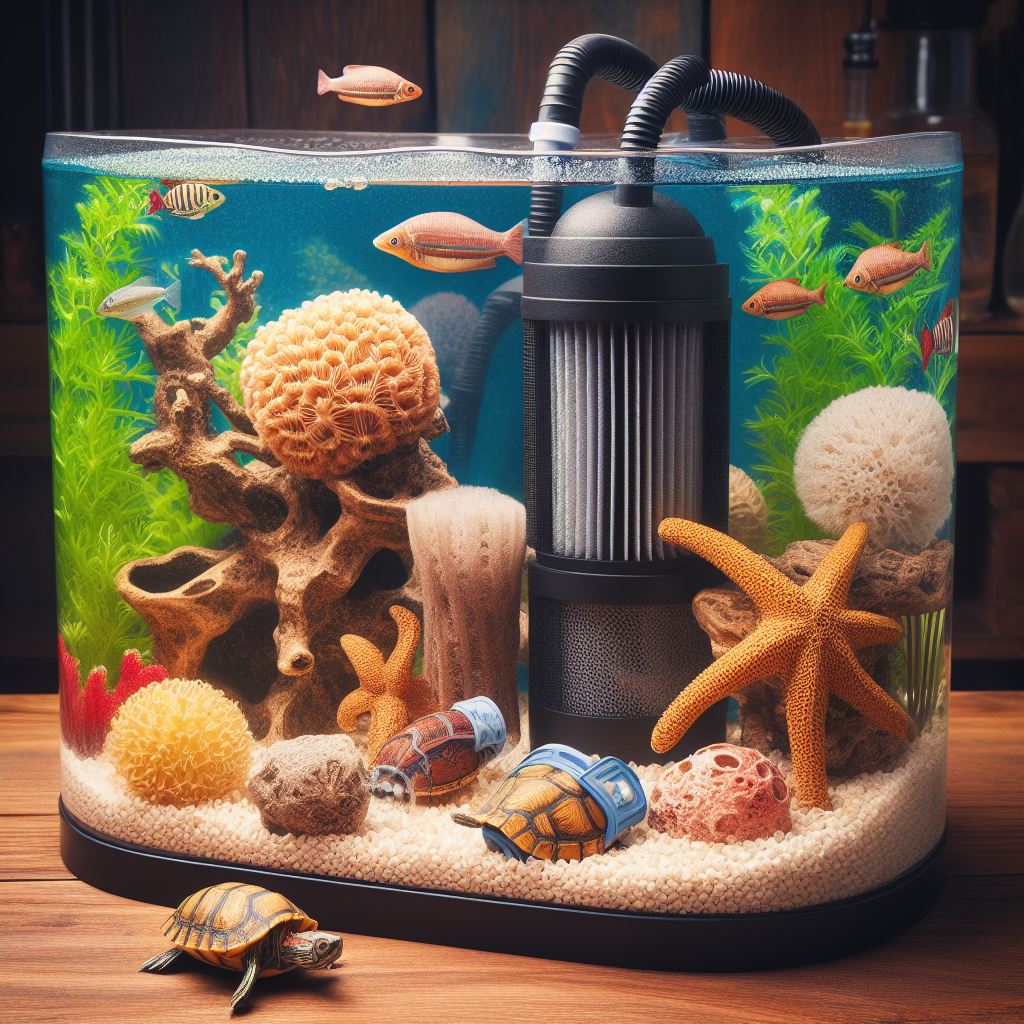
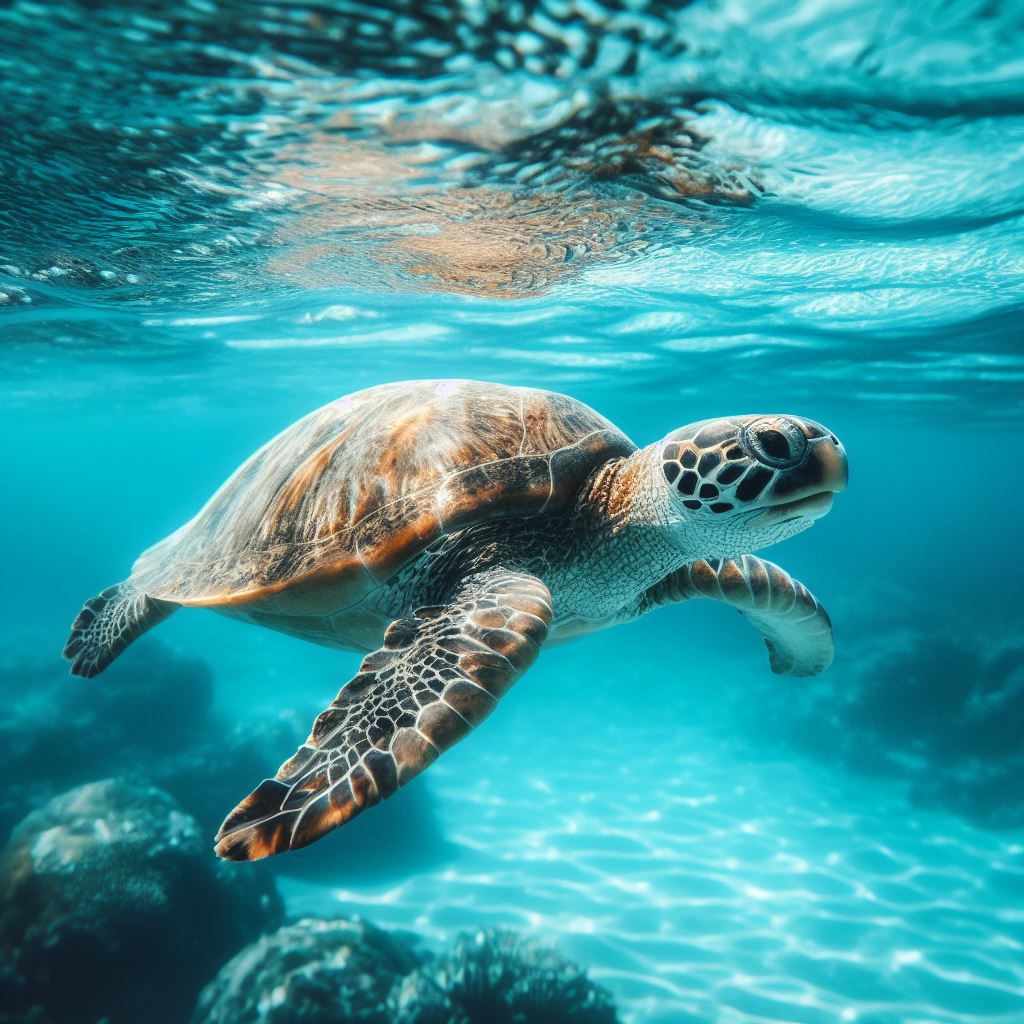
Water Changes: Regular water changes are necessary to remove waste and maintain water quality.
Aim to change at least 25% of the water every 1-2 weeks, depending on the size of your tank and the number of turtles.
- Water Conditioner: Tap water often contains chemicals that can be harmful to turtles. Use a water conditioner to neutralize chlorine and chloramines before adding it to your turtle’s tank.
- Testing Water Parameters: Regularly testing the water in your turtle’s tank is essential for maintaining a healthy environment. Monitor parameters such as pH, ammonia, nitrite, and nitrate levels, and adjust them as necessary.
Decorations and Enrichment
Basking Platform: A basking platform should be provided for your turtle to climb onto and dry off.
This can be a commercially available turtle dock or a DIY platform made from rocks, driftwood, or plastic containers.
Ensure the platform is stable and large enough to accommodate your turtle’s size.

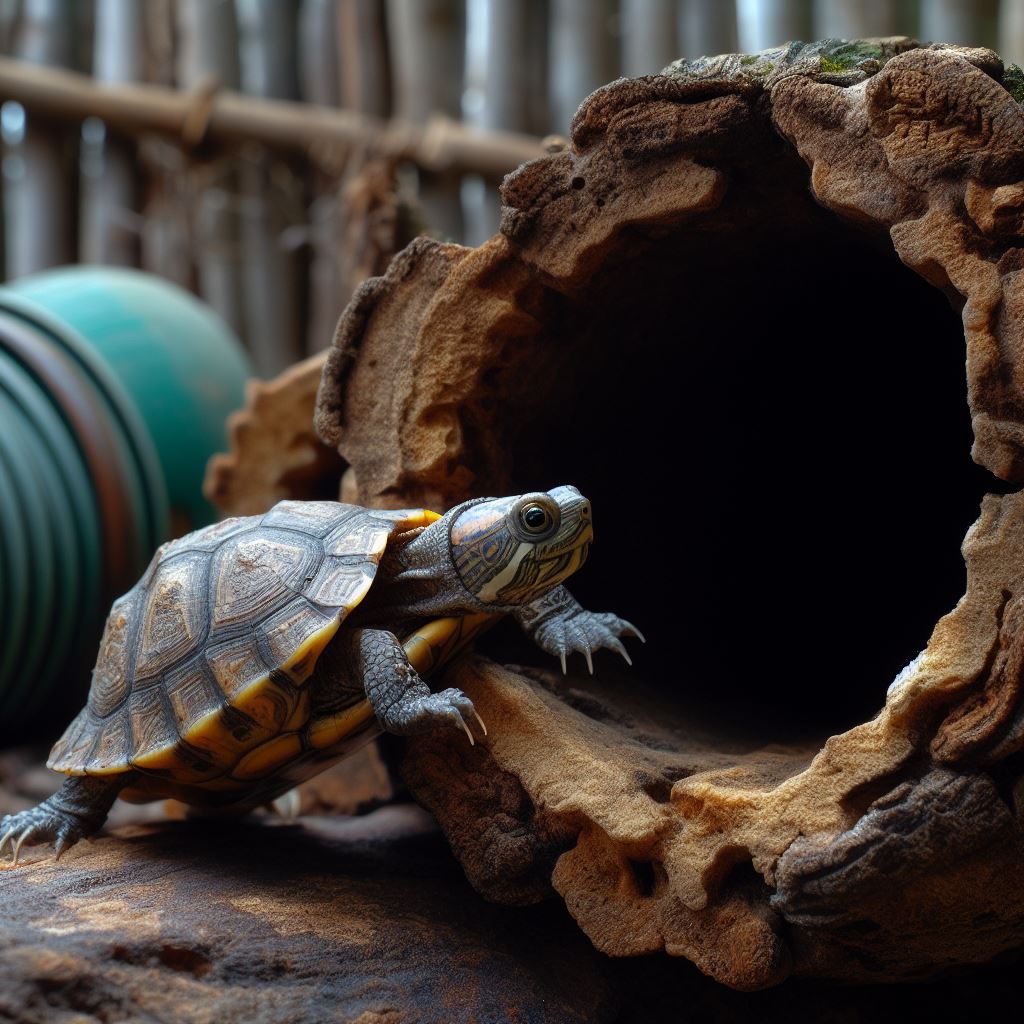
Hiding Spots: Turtles appreciate hiding spots in their habitat, such as caves, hollow logs, or PVC pipes.
These provide a sense of security and help in reducing stress.
Plants and Substrate: Live or artificial plants can be added to your turtle’s habitat to provide cover and enrichment.
A substrate, such as gravel or sand, can also be added to the bottom of the tank, but be aware that some turtles may ingest it, leading to impaction.
Large river rocks or bare-bottom tanks can be used as alternatives.
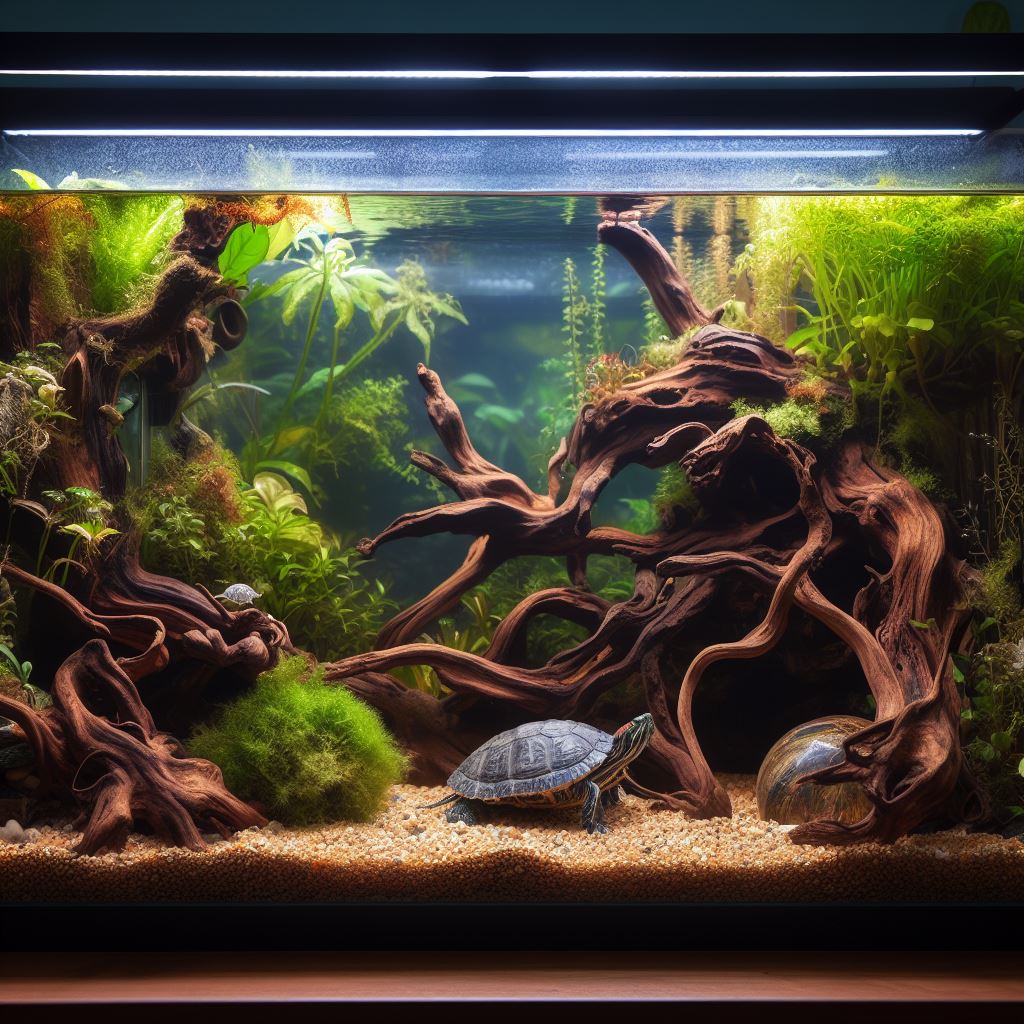

Toys and Enrichment: Providing toys and enrichment activities can help keep your turtle mentally stimulated and prevent boredom.
Consider adding items such as floating logs, balls, or even feeder fish for your turtle to chase and interact with.
Ensuring Your Turtle’s Health and Well-being
Turtle Diet and Health
Diet: A balanced diet is crucial for your turtle’s health.
Commercial turtle pellets can be used as a staple, supplemented with fresh vegetables, fruits, and protein sources such as insects, fish, or shrimp.
Research your specific turtle species’ dietary needs to ensure proper nutrition.

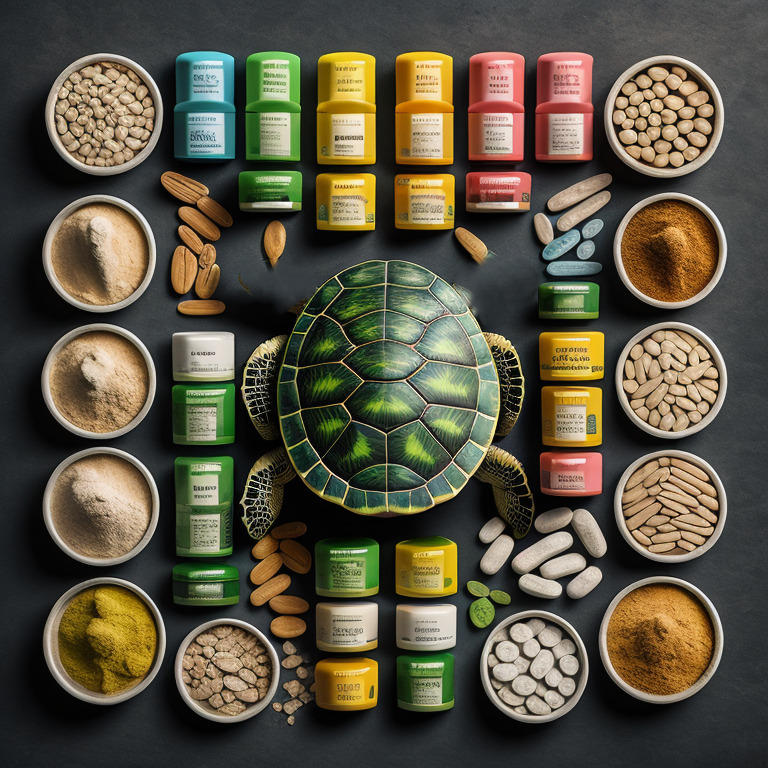
Vitamins and Supplements: Calcium supplements and multivitamins can be added to your turtle’s diet to support optimal health.
Consult with a veterinarian or experienced turtle keeper for guidance on appropriate supplementation.
- Health Monitoring: Regularly observe your turtle for signs of illness, such as lethargy, loss of appetite, or changes in shell appearance. Consult a veterinarian specializing in reptiles if you suspect any health issues.
Safety Precautions
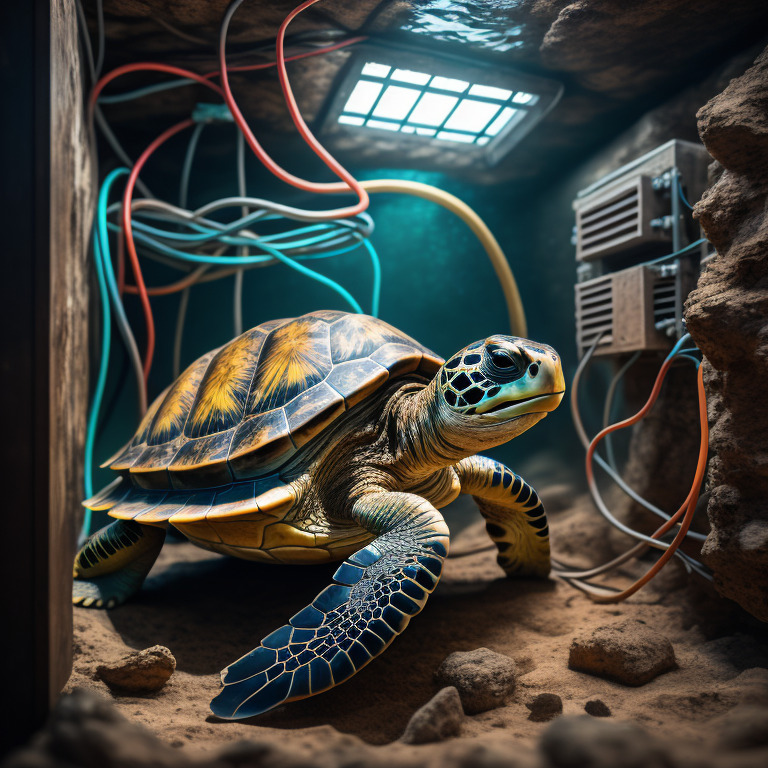
Electrical Safety: Ensure all electrical equipment, such as heaters and lighting, is safely installed and well-maintained to prevent accidents.
Cleaning and Maintenance: Regularly clean and disinfect your turtle’s tank to prevent the buildup of harmful bacteria. Always wash your hands thoroughly after handling your turtle or cleaning its habitat to minimize the risk of salmonella infection.
- Turtle-proofing Your Home: If you allow your turtle to roam outside its enclosure, ensure your home is turtle-proofed by blocking off small spaces where your turtle could get stuck or injured and removing any potential hazards, such as toxic plants or chemicals.
Conclusion
Creating the perfect habitat for your pet turtle takes time and effort, but it is well worth it to ensure the health and happiness of your shelled friend.
By providing the right tank or enclosure, lighting, heating, water quality, decorations, diet, and safety precautions, you can create a comfortable and stimulating environment for your turtle to thrive.
Remember to continually research and consult with experts to stay informed on the best practices for turtle care. Your dedication will be rewarded with a happy and healthy companion for years to come.
